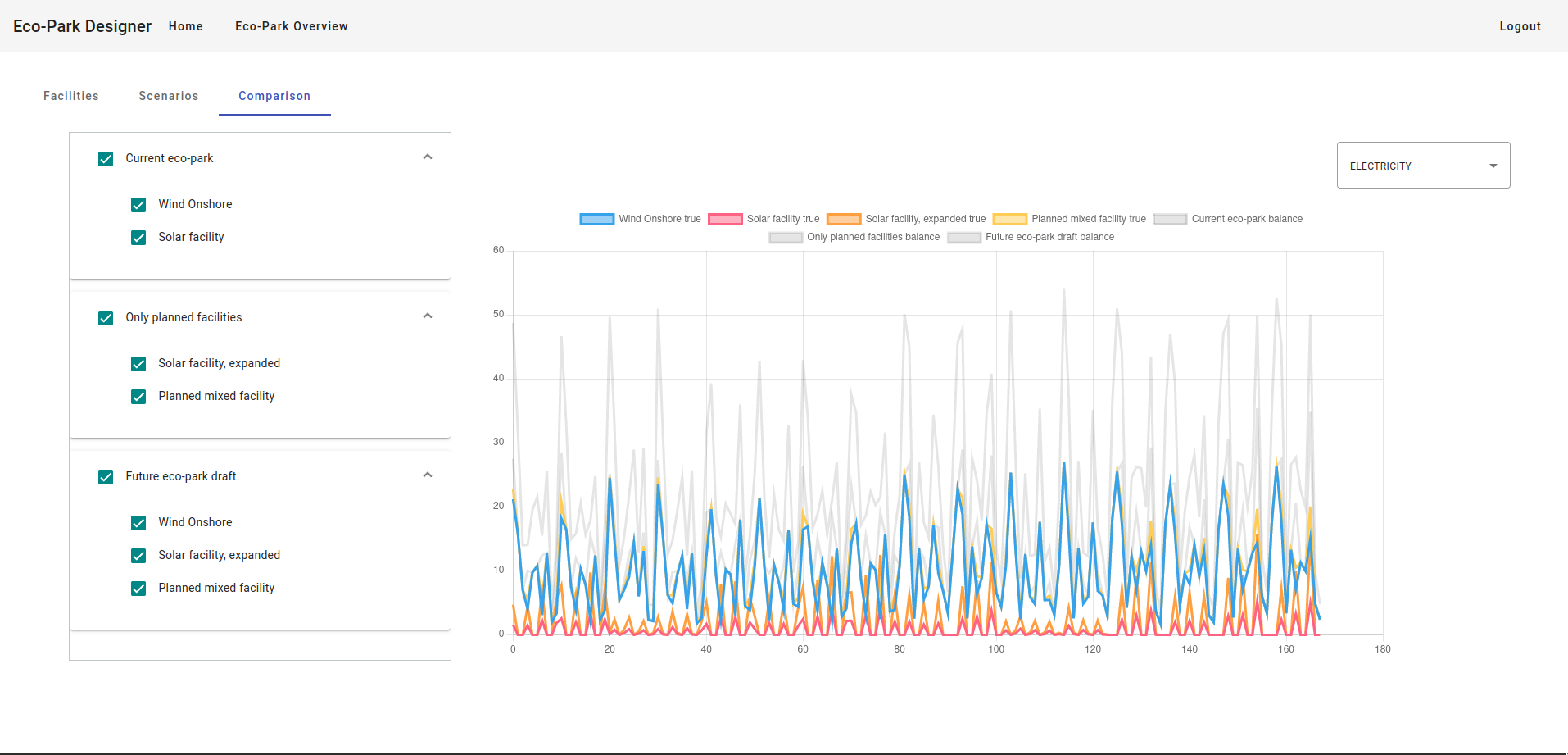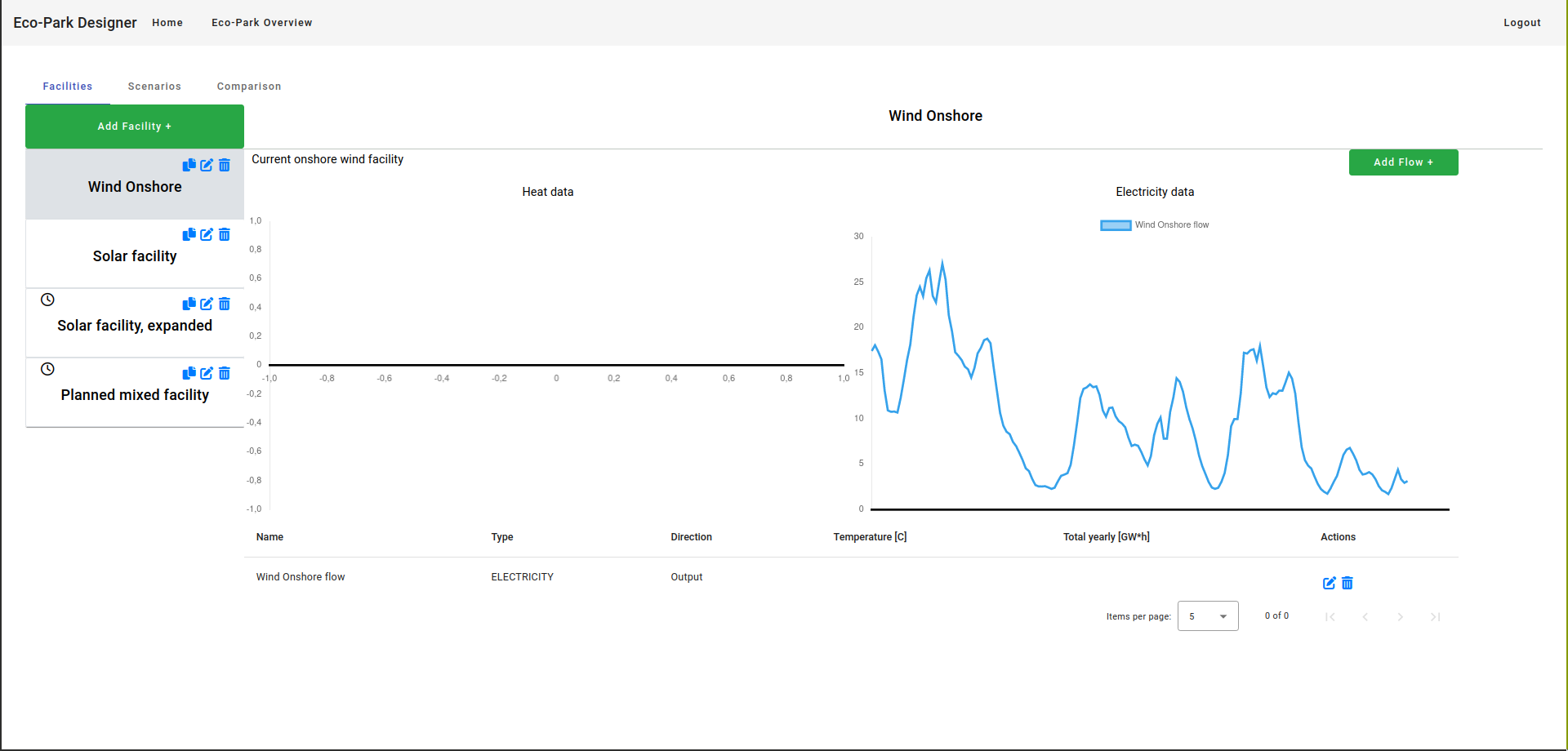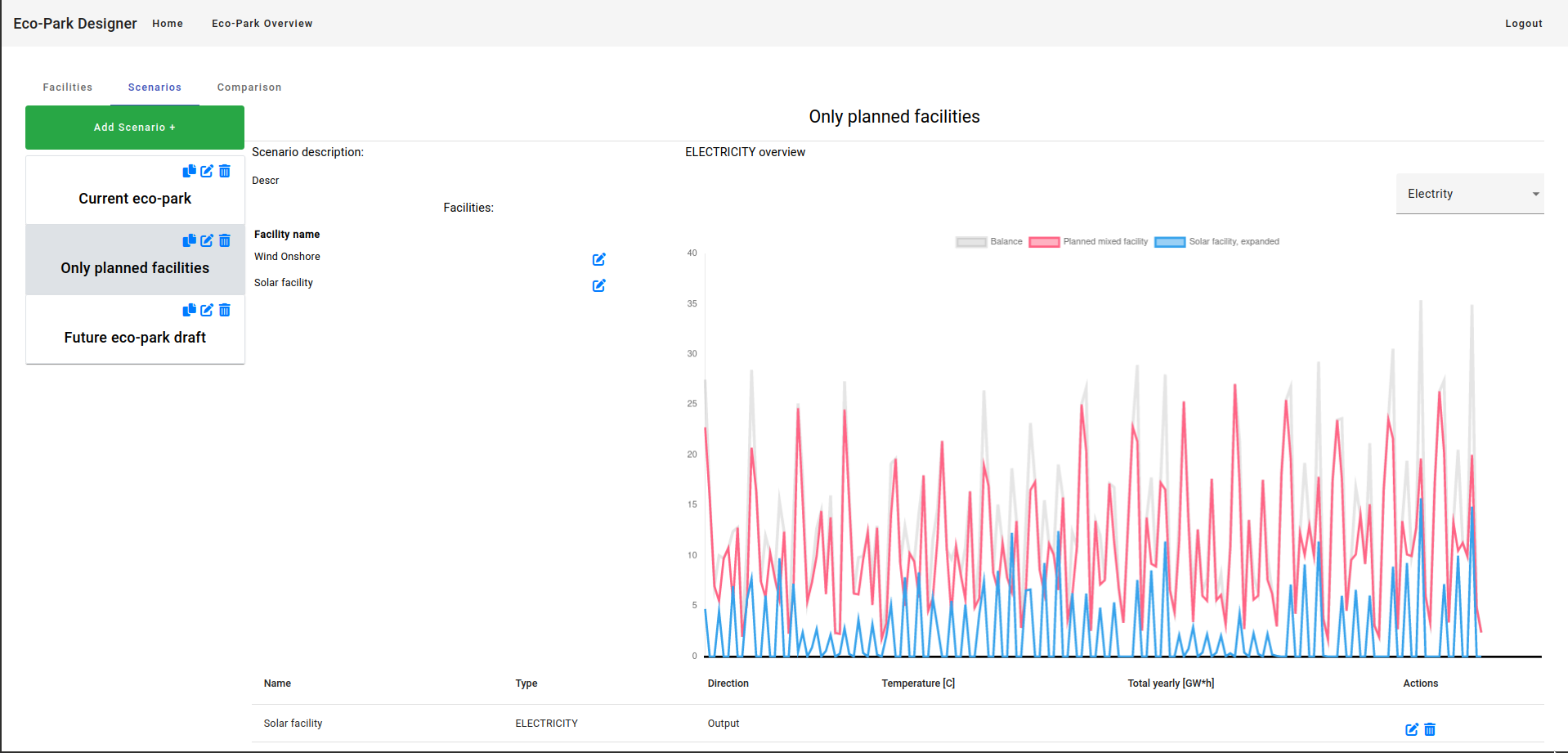


Symbiosis Tool
The Symbiosis Tool is a web-based decision support platform specifically designed for optimizing energy symbiosis within an area, e.g., industrial parks. Its primary goal is to model and visualize energy flows to improve resource efficiency, reduce environmental impact, and enhance operational sustainability.
Key Features of the Symbiosis Tool:
- Web-Based and User-Friendly: Unlike traditional desktop applications that require specialized knowledge and are limited by platform dependencies, Symbiosis is designed to be accessible through any modern browser. This ensures greater portability and ease of use, making it suitable for a wide range of stakeholders, including those with varying technical backgrounds.
- Energy Flow Modeling: The tool allows users to model facilities and their energy flows within an industrial park, including both energy generation (e.g., wind, solar) and consumption (e.g., industrial processes). By visualizing these flows, users can analyze energy balances, identify inefficiencies, and optimize the distribution of energy across the park.
- Scenario Creation and Comparison: Symbiosis supports the creation of multiple scenarios, allowing users to model different configurations of the industrial park and compare their energy performance. For instance, users can simulate the impact of adding or removing facilities and assess how changes affect the overall energy balance.
- Support for CSV Data and Visualizations: Users can upload time-series data for energy flows in CSV format, which the tool uses to generate detailed visualizations of energy consumption and generation over time. This helps users understand energy dynamics within the park and make informed decisions.
- Symbiosis Focus: The tool emphasizes energy symbiosis, which refers to the efficient exchange and use of energy resources between facilities within the park. By facilitating the sharing of surplus energy and reducing energy waste, Symbiosis helps optimize overall energy efficiency in the industrial ecosystem.
Theories Behind the Symbiosis Tool:
- Industrial Symbiosis (IS) and Circular Economy:
- The concept of industrial symbiosis is at the heart of the Symbiosis tool. IS promotes collaboration among industries to use each other's waste or by-products as inputs for their own processes. This aligns with the principles of the circular economy, which seeks to minimize waste and make the most of resources. In this context, energy surplus from one facility (e.g., renewable energy generation) can be repurposed for another, reducing the need for external energy inputs.
- The successful implementation of industrial symbiosis in Kalundborg, Denmark, serves as a key inspiration. The tool draws on these principles to facilitate energy symbiosis within eco-industrial parks, optimizing energy exchanges between different facilities.
- Energy Flow Analysis (EFA):
- The Symbiosis tool integrates energy flow analysis (EFA) to model and visualize how energy is generated, consumed, and transferred within the park. This is critical for understanding the efficiency of energy use and identifying opportunities for improvement. The tool’s capacity to handle electricity and heat flows ensures comprehensive energy modeling.
- Traditional energy analysis tools provide similar modeling capabilities but are often desktop-based and require advanced technical expertise. Symbiosis distinguishes itself by offering a simplified and focused user interface tailored specifically for industries.
- Eco-Industrial Parks (EIP):
- The tool builds on the concept of eco-industrial parks, where industries collaborate to optimize resource use, including energy. EIPs represent a move toward more sustainable industrial operations by promoting the exchange of resources (energy, water, materials) between facilities. Symbiosis applies these principles to energy flows, helping users design and operate industrial parks that maximize energy efficiency and reduce environmental impact.
- Decision Support Systems (DSS):
- Symbiosis functions as a decision support system (DSS), providing stakeholders with the information needed to make strategic decisions regarding energy management. By modeling various scenarios and visualizing energy flows, the tool helps park operators make informed decisions on facility configurations, energy usage, and resource allocation(symbiosis).
How the Symbiosis Tool Advances the State-of-the-Art:
- Focus on Energy Symbiosis: Unlike general energy management tools, Symbiosis is tailored specifically for EIPs, with a focus on facilitating energy symbiosis. This makes it highly specialized and effective for managing energy exchanges within industrial ecosystems.
- Accessibility and Usability: The web-based nature of the tool lowers the technical barriers associated with traditional energy flow modeling tools, allowing a broader range of users to leverage its capabilities without requiring extensive training.
- Scenario Analysis: By enabling users to create and compare multiple scenarios, the tool offers valuable insights into how different industrial park configurations affect energy balance and sustainability, making it a powerful tool for both initial park design and ongoing optimization.
Related publications: Symbiosis: A Web-Based Decision Support Tool for Achieving Symbiosis in Industrial Parks
Principal investigator: Zheng Grace Ma
Development team: Henrik Schwarz, Hampus Fink Gärdström, Fuad Hassan Jama